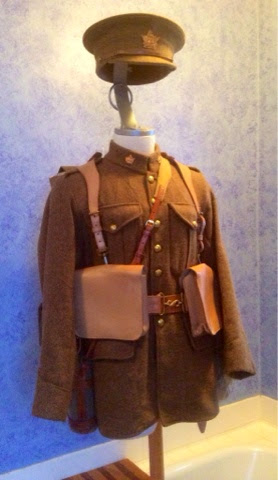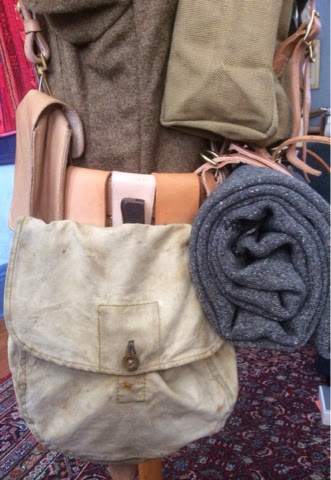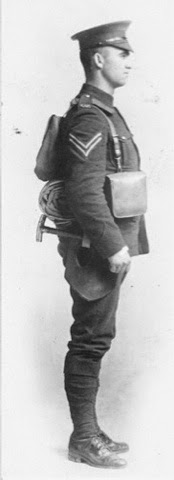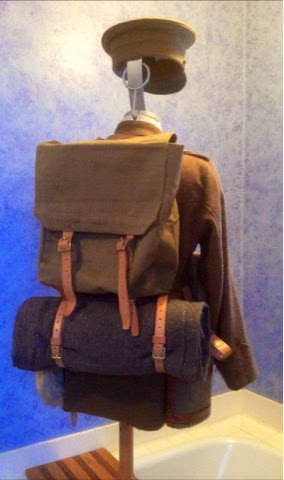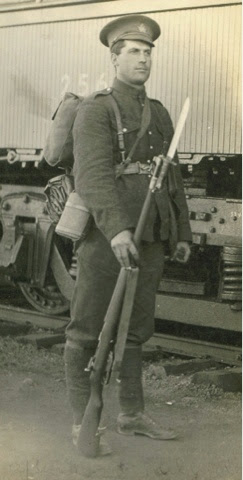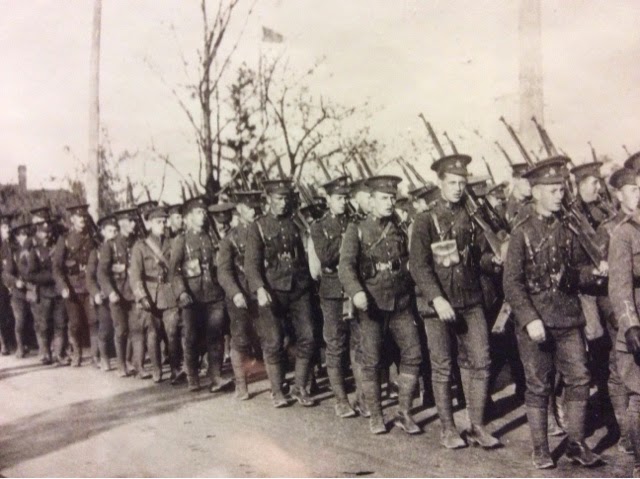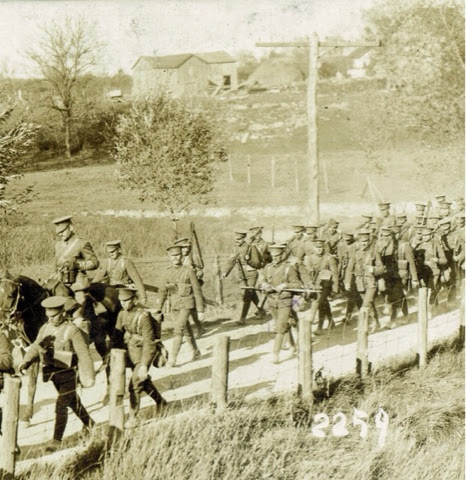As with all the other gear the belt must be fitted first, snug around the waist at the belly button. The yoke system is much saner and a more comfortable fit than the other Canadian systems. It needs to be attached so that the strap lengths allow the yoke to curve around the shoulders beneath the collar. This will take a bit of trial and error.
The front straps can be attached to the belt without the ammunition pouches, but ultimately the ammo pouches will be fitted on and the straps passed through the rectangular loops on the pouches themselves. I find it's best not to pass the strap through the pouch loops and the belt loops as the pouch will tend to flop forward.
Once the yoke and belt are set up the other gear can be added. The water canteen hangs snapped on the right, the bayonet frog will be threaded on the left, and the haversack can be buckled over it.
The large pack is a bit more of a contraption with its crossing backs straps to cinch everything in place. First it must be buckled on over the shoulders.
Then the bottom loops with the studs secure it to the belt.
Finally the crossing straps are tightened and buckled to the bottom straps.
This whole system makes sense as a means of putting on or taking off the large pack without assistance. With supple arms and minor contortions even the lower straps can be worked. Similarly the canteen is more readily removed for a drink. Much more thought has gone into the 1916 equipment with regard to ease of wearing and adjusting.
The ammo pouches are flawed, however, because the belt loops are held by studs that work loose in their holes and the effort to open and close the pouch flap with the buckled extensions is laborious. It seems, again, that the Victorian origins are too dominant and what may look smart doesn't quite cut it.












